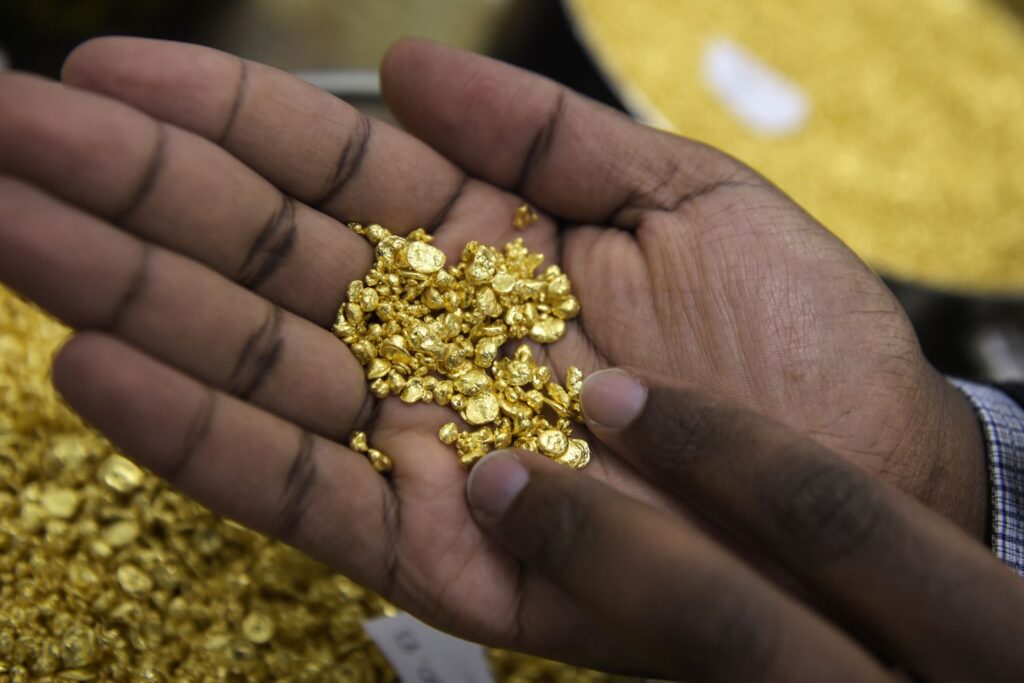Gold continues to set fresh all-time highs and invoke comparisons to decades-old economic conditions and performance levels. Now, the yellow metal has hit another metric not seen in 45 years. Gold has gained almost 43% so far this year, supported by a weaker dollar, central bank buying, inflows into ETF holdings and geopolitical tensions.
Gold’s price gains are great news for precious metals investors, but the yellow metal’s surge toward $4,000 per ounce also reveals a degree of economic and geopolitical anxiety not seen since the late 1970s,
As per gold update by Prithviraj Kothari, gold soared to a new record this week with spot prices topping USD 3790 per ounce, buoyed by renewed expectations for further US interest rate cuts following the Federal Reserve’s recent quarter-point reduction. At the same time, the US dollar weakened against the euro and Swiss franc, snapping a three-day winning streak as markets focused on signals from Fed officials and looming inflation data. Investors’ concerns over the US labour market and potential for additional monetary easing drove both the surge in gold – which benefits from lower rates – and the decline in the greenback.
Currently it seems the entire universe is putting its force on gold and pulling it high. All factors, are working collectively and pushing gold to new highs. Let’s have a close look at each
TARRIFF AND TRADE WAR- The yellow metal received a boost late Thursday after U.S. President Donald Trump announced a slew of trade tariffs, most notably a 100% tariff on all pharmaceutical imports.
As per bullion king of India, Prithviraj Kothari, the move ramped up uncertainty over the global economic impact, and sparked risk-off moves across broader financial markets, in turn spurred some safe haven flows into gold.
INTEREST RATE -although Federal Reserve Chair Jerome Powell’s remarks did not provide a clear timetable for future interest rate cuts, the bank still anticipates that the Fed will continue to cut rates if the U.S. economic conditions weaken further. Gold typically performs better in a low-interest-rate environment because lower yields reduce the opportunity cost of holding non-interest-bearing metals. With gold’s recent rise, investors may consider gaining better entry points through structured products.
Previously, Federal Reserve Chair Jerome Powell stated that the current policy stance is moderately tight, allowing the Fed flexibility to respond to economic needs. However, Powell also pointed out that potential deterioration in inflation and employment could bring two-way risks, and there is no risk-free path for the interest rate outlook.
The remarks of other Fed officials were not entirely consistent with Powell’s. Although the neutral interest rate should be lower than current levels, the Fed should remain cautious going forward.
INFLATION DATA- Gold prices are firmer following an important U.S. inflation report that was out and right in line with market expectations. Market analyst firmly believe that $4,000 gold is a real possibility. The main reason is the Federal Reserve is continuing to loosen monetary policy as we move into 2026. We’re likely looking at one more cut this year, potentially two, even though the Fed chair didn’t give us complete confirmation. Fed Chair Jerome Powell said the central bank faces a “challenging situation” with ongoing risks of faster-than-expected inflation while weak job growth raises concerns about labour market health. He offered little clarity on when the Fed might next cut interest rates.
The gold market recognized that there was nothing significant in his speech compared to the tone set last week, nothing significant enough to change the upside path in gold.
Sticky inflation gives the Fed less impetus to cut interest rates, while “a tame inflation could strengthen the case for interest rate cuts and would further support the precious metals complex.
GEOPOLITICAL TENSIONS– Meanwhile, NATO warned Russia that it would use “all necessary military and non-military tools” to defend itself as it condemned Moscow for violating Estonian airspace in “a pattern of increasingly irresponsible behaviour” leading to geopolitical uncertainty thus pushing gold up.
STRONG BUYING INTEREST FROM ETF INVESTORS, driven by expectations of rate cuts, concerns around the Fed’s independence and geopolitical developments – are also likely giving gold prices a boo
CENTRAL BANK BUYING- The People’s Bank of China is leveraging the Shanghai Gold Exchange to encourage central banks from friendly nations to purchase and store bullion within its borders.
Conflict in Europe and the Middle East, as well as simmering tensions between the U.S. and China, have given central banks around the world reason to be major buyers of gold this year. According to the World Gold Council’s 2025 Central Bank Gold Reserves Survey, 95% of central bankers expect global gold reserves to increase this year, and a record 43% forecast their own bank’s reserves would increase over the same period.
WEAK DOLLAR- Concerns that tariffs and Trump’s immigration crackdown would slow U.S. growth, and potentially push the economy into a recession, weighed on the dollar through those months. The decline may have also partially been driven by de-dollarization or the “Sell America” trade, in which foreign investors, spooked by the Trump administration, dumped dollars and Treasurys.
A weaker greenback is expected to continue to be a tailwind for gold, which is priced in dollars, through the rest of the year.
As per Prithviraj Kothari’s view on gold, gold remains in momentum and any longer-term breaches below USD 3444 will signal a correction and should be a stop for trading positions. Longer term positions however may use any dips as a buying opportunity as we believe gold has begun a very large move which may last several months.

